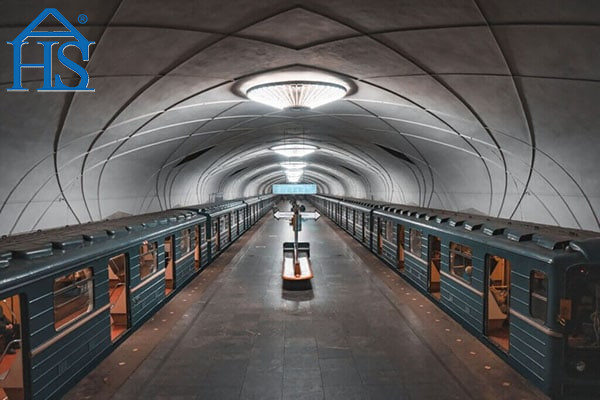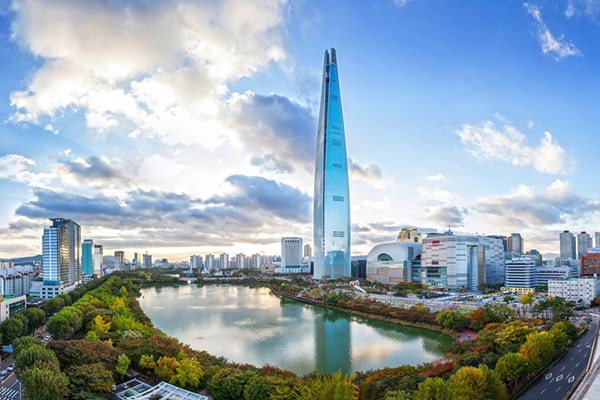据观察,只有最好的耐高温材料才被用作耐火材料. 耐火材料是由硅的混合物制成的, 铝, 和钙. 它们的低导热性有助于防止热量从熔炉中转移出去. 这很重要,因为它可以减少维持熔炉所需温度所需的能量.
根据其化学成分, 耐火材料受热时会膨胀. 氧化镁是迄今为止最常用的材料,它具有高膨胀系数. 耐火材料的典型制造过程包括破碎和研磨等步骤, 随后形成, 射击, 和最终加工.
硅粉的最佳耐火材料用途
硅粉是硅制造过程中的副产品. 单质硅是通过在极高温度下加热石英而产生的, 二氧化硅 (二氧化硅) 由此产生的进一步氧化和缩合产生硅粉. 本文将讨论如何用硅粉制造耐火材料.
耐火材料用于制造金属铸造模具和金属生产的铸造设备. 它们还用于高温炉中,通过熔化铸件来制造钢或其他金属.
制造商主要使用这种材料来生产陶瓷制品. 使用硅粉可以制造多种类型的耐火材料, 包括耐火浇注料, 非织造纤维材料, 以及能够承受高温而不会随着时间的推移而分解的助焊剂.
硅砂因其能够提供更好的填充性而被广泛用于耐火浇注料的生产. 在保持相同的流动特性的同时,它比沙子需要更少的水, 使其非常适合低温烧结. 硅砂也非常有利于促进莫来石的形成, 这有助于使您的浇注料更加耐用.
浇注料坚固且可阻止气体, 矿渣, 和金属穿过它. 硅粉浇注料最强, 尤其是在高温下 & 高密度. 您在食谱中使用硅粉的次数越多, 对您的选角项目越好.
什么是微硅粉?
微硅粉 本质上是硅铁合金和金属硅生产过程中获得的副产品. 硅粉因其在混凝土中的应用而广受欢迎. 这不仅仅是磨砂玻璃 – 它还混合了其他矿物质.
硅粉质轻且多孔, 因此很容易与其他材料一起加工. 硅粉可用于绝缘或作为橡胶产品的填料,因为它有助于材料耐热和防潮.
这种多功能性和提供更均匀产品的能力使微硅粉成为制造高质量耐火浇注料的理想添加剂. 这是由于硅粉对 pH 值具有稳定作用, 减少杂质, 并提高最终产品的可加工性.
为什么使用微硅粉代替其他耐火材料?
工业环境中使用耐火材料并不罕见. 然而, 并非所有耐火材料都是一样的. 最常用的材料是硅砂, 砖, 水泥, 和粘土. 然而, 这些材料会占用过多的空间并产生有害气体.
硅粉是一种储量丰富的工业矿物 – 它是金属硅生产过程的一个分支. 因为它比其他材料占用的空间更少,而且其生产过程不会向环境中释放有害气体, 随着时间的推移,硅粉作为工业矿物的选择越来越受欢迎.
建立联系的作案手法
硅粉与水反应形成硅烷醇基团 (硅羟基) 表面上. 这些基团在 80°C 时缩合形成硅氧烷键 (Si−O−Si). 这种在室温低温下形成的硅氧烷网络在 250°F 时开始分解.
此外, 硅粉在不同温度下提供高强度. 硅粉有助于提高浇注产品在低温和高温下的强度.
硅粉之所以如此特别,是因为它实际上可以在高温下与 Al2O3 反应形成莫来石, 由于其高活性. 这提高了普通耐火浇注料的强度和稳定性. 得益于其设计和材料的结合, 该产品可具有超过AB冷压碎强度 100 1000℃左右烧成后MPa.
硅粉在耐火材料中的用途
硅粉是波特兰水泥生产的副产品,几个世纪以来一直用于耐火材料.
微硅粉有多种应用:
– 耐火材料: 正确比例的硅粉可使蜂箱内衬承受高达 2100°C 的温度而不变形或熔化. 这使其成为某些烤箱和熔炉最常见的衬里形式.
– 硅粉是一种直接影响其流动性的物质. 该物质的二氧化硅含量越高, 它流动得越好. 使用低 SiO2 含量硅粉可能会导致浇注料中含水量较高.
– 结构绝缘子: 硅粉颗粒有助于隔热, 因为它具有热稳定性,在 2100°C 之前不会熔化.
– 陶瓷: 硅粉还有助于改善陶瓷材料的性能.
– 硅粉因其高表面自由能而成为一种非常活泼的材料. 为此原因, 硅粉通常与其他颗粒碰撞并容易结块. 为了提高其反应活性, 某些类型的未致密硅粉通常用作粘合剂,因为它们具有更高的分散效率. 硅粉是低强度产品生产中有效的二次反应物, 高密度浇注水泥.
硅粉的存在对含氧化镁浇注料的影响
硅粉在氧化镁浇注料中的使用已得到广泛研究. 潜在的好处是减少孔隙率, 渗透性降低, 减少气体泄漏, 减少收缩, 高温下具有更好的强度, 和改善的热性能. 该实验旨在确定硅粉的存在如何影响含氧化镁浇注料的性能. 浇注料是一种固化后不产生表面张力的混凝土.
硅粉及其对耐火材料的影响
硅粉是二氧化硅的副产品, 也称为微硅. 在制造过程中, 沙子被加热到 2,200 在熔炉中在摄氏度下生产硅和硅粉.
这种二氧化硅因其具有高熔点和低导热率的特性而被用于耐火材料. 耐火材料因其耐热性和抗氧化性而用于炼钢和玻璃生产等工艺.
因此,硅粉经常用于建筑用砖和砂浆的生产.
硅粉在耐火材料中的优缺点
硅粉作为耐火材料添加剂已有十多年的历史. 至今仍被广泛使用, 但对于使用硅粉也有一些争论. 硅粉比其他替代品便宜, 它减少二氧化硫排放并减少烟雾产生. 然而, 使用硅粉也有缺点. 高温产生的硅粉会造成污染, 但这可以通过使用粘合剂来创建更坚固的材料形式来缓解.
结论: 为什么微硅粉是耐火材料的良好选择
硅粉是最常用的制砖耐火材料之一. 是二氧化硅的重要来源, which forms strong bonds with calcium oxide and aluminum oxide in clay bricks. This makes it a perfect material for use in refractory materials. 此外, it has excellent insulating properties that make it heat resistant and resistant to corrosion. Another key feature is its low density, which means it takes up less space than other refractory materials like finely ground coal or lime mortar. In addition to these benefits, 由于二氧化硅能够将热能快速从一处传导至另一处,硅粉还具有良好的热容量和导热性.
总而言之, 微硅粉具有众多优点,使其成为耐火材料的完美选择:
• 该材料耐热, 火, 和震惊.
• 具有高热容和低导热率, 这种材料是需要耐高温应用的最佳选择.
• The refractory material offers outstanding thermal stability. It does not crumble under thermal shock.
It is important to choose a trusted silica fume supplier, 如河南高级磨具进口 & 出口贸易公司, 有限公司. 立即购买我们的高品质硅粉产品.





